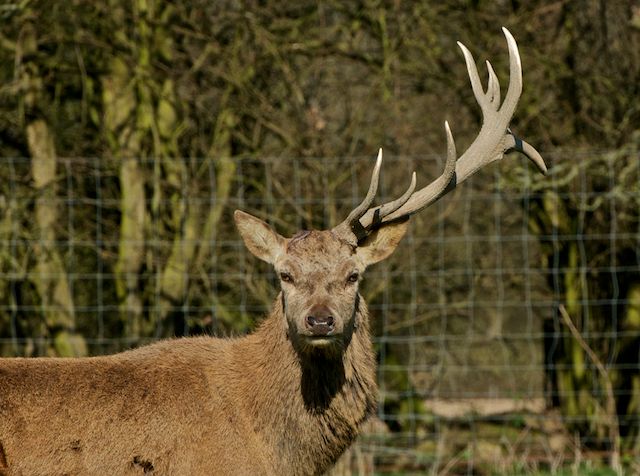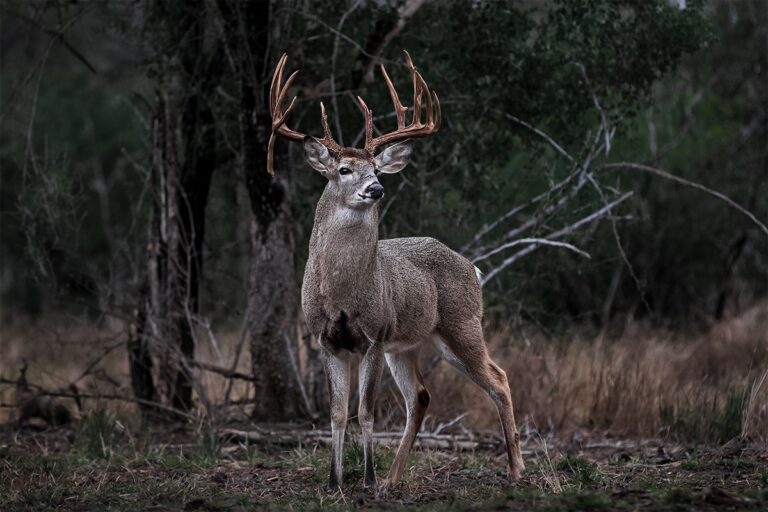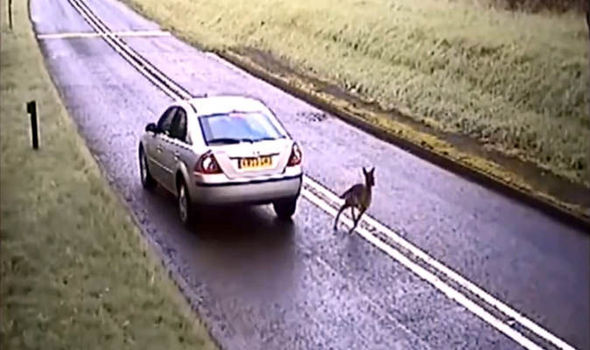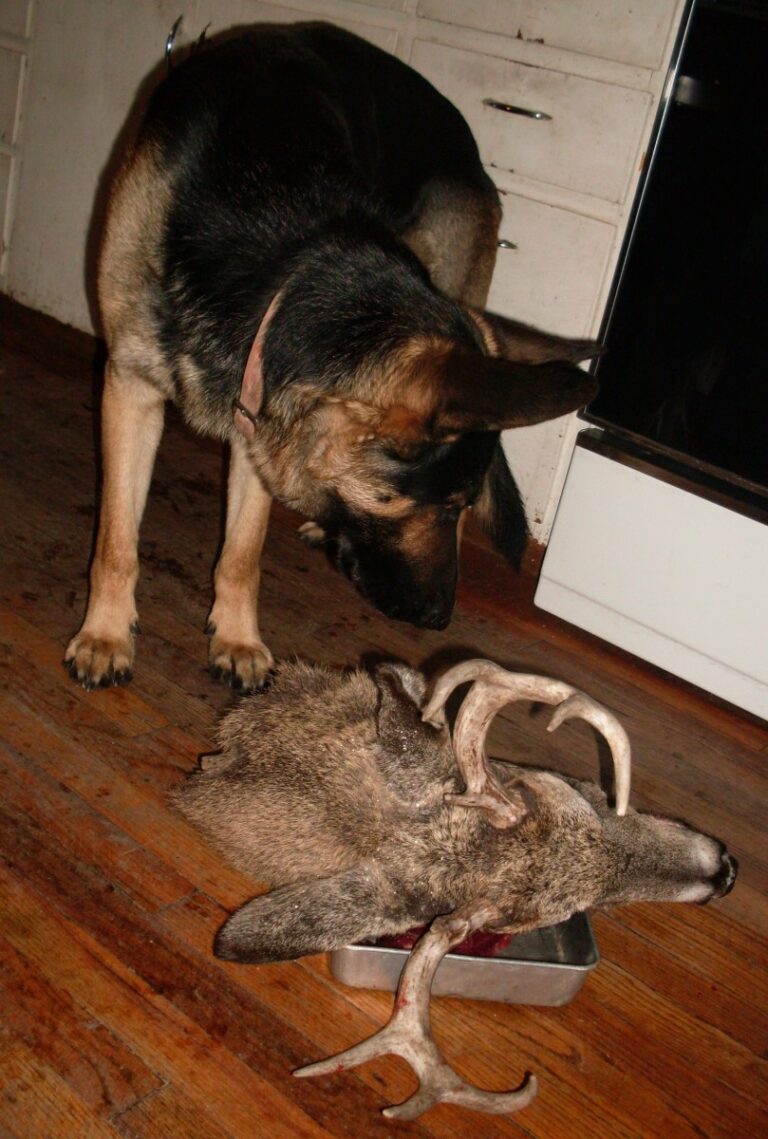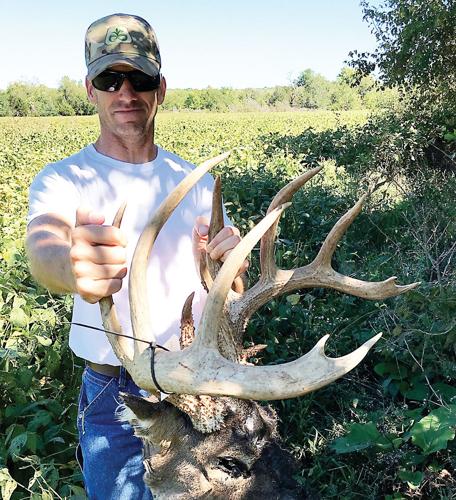What is Deer With One Antler
A deer with one antler is typically a deer that has lost one antler due to injury or is experiencing an abnormal antler growth cycle. This condition can occur in various deer species, both in the wild and captivity.
Deer antlers are unique features that grow, shed, and regrow annually. One-antlered deer may be encountered due to various factors, including damage done to the antlers or their base (pedicle) during the velvet stage when antlers are most vulnerable. Genetic anomalies, nutritional deficiencies, or physical injuries might result in the asymmetry.
While a deer with one antler may draw attention, it’s generally a temporary situation. Once the deer’s annual antler cycle restarts, typically there is a chance for a symmetrical set to develop if the underlying issue doesn’t persist. Spotting such a deer in nature signifies the resilience and adaptability of wildlife, and it provides an interesting insight into the biological processes governing antler development.
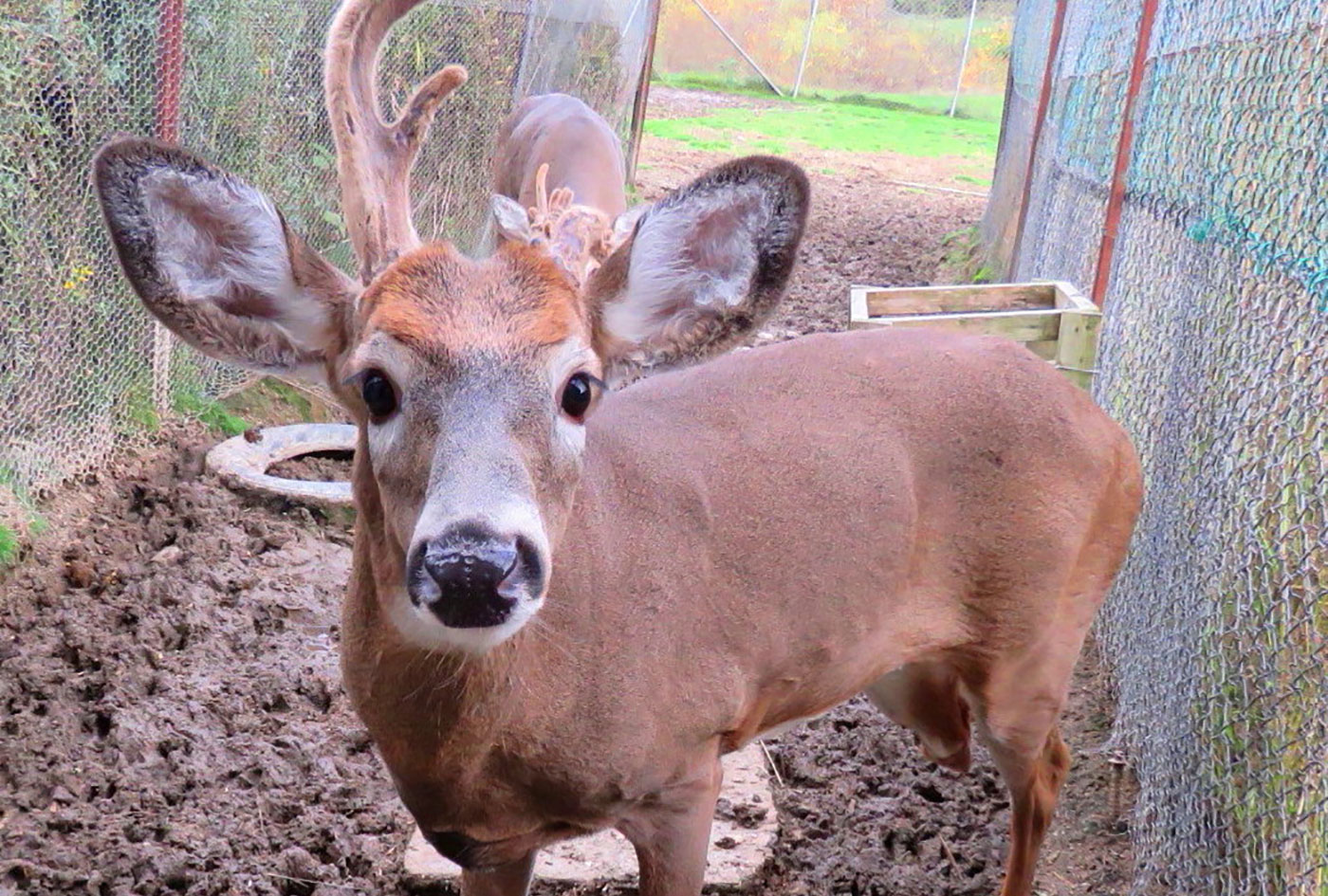
Credit: www.nrcm.org
Understanding The One Antlered Deer
Welcome to a fascinating journey into the world of cervids, as we shine a spotlight on the enigmatic ‘One Antlered Deer’. This unique phenomenon has stirred the curiosity of wildlife enthusiasts and biologists alike. Let’s delve deep to understand this uncommon occurrence.
Definition Of A One Antlered Deer
A one antlered deer refers to a deer exhibiting asymmetry in its cranial adornments – simply put, it has a single antler. This condition can occur in any deer species, male or female, though it’s more prevalent in males. Typically, deer showcase a pair of symmetrical antlers that they shed and regrow each year. However, environmental factors, health issues, or injuries can disrupt this natural process, resulting in the development of just one antler.
Factors Contributing To Antler Loss
Several factors can lead to a deer sporting just one antler:
- Injuries: Physical trauma to the antler or its base can impede normal growth.
- Imbalanced Nutrition: Poor diet affects antler development, sometimes causing asymmetrical growth.
- Genetic Conditions: Inherited traits may manifest as uneven antlers.
- Diseases or Parasites: Health issues can interfere with proper nutrient absorption necessary for antler formation.
Understanding these factors is crucial in evaluating the health and living conditions of deer populations. A one antlered deer often captures the imagination and can serve as an indicator of the environmental and biological challenges faced by the species.
Biology And Behavior Of Deer With One Antler
Deer with one antler, often referred to as “unilaterally antlered deer,” present a unique curiosity within the deer family. Unlike the common portrayal of deer with a majestic set of symmetrical antlers, these unique individuals display an asymmetrical crown. Understanding the circumstances and consequences of such a characteristic illuminates fascinating aspects of deer biology and behavior.
Antler Growth And Shedding Process
Antler growth is a dynamic process influenced by hormones, nutrition, and the animal’s overall health. It generally commences in the spring and continues through summer, concluding with the calcification and shedding of velvet as fall approaches. Typically, this growth is symmetrical, resulting in a balanced set of antlers.
Impact Of Unbalanced Antlers On Deer Behavior
When a deer sports one antler, whether from injury, genetic anomaly, or a disruption in the normal shedding process, it can impact their behavior. Concerns arise about the animal’s well-being and ability to carry out typical activities such as foraging, sparring, and eluding predators. The weight distribution caused by unbalanced antlers can potentially affect the deer’s neck musculature and overall agility.
Social dynamics may also shift, as antlers are a tool and symbol in deer society, used to establish dominance. A deer with a singular antler might find itself at a disadvantage during the breeding season when antlers play a central role in male-male competition. Despite the potential drawbacks, deer are highly adaptable creatures, and many with one antler learn to thrive despite their atypical appearance.
Significance Of One Antlered Deer In Wildlife Conservation
The image of a one antlered deer wandering through the wild may appear as a rare anomaly, but it presents a unique perspective on the resilience of wildlife. These individuals not only pique the curiosity of wildlife enthusiasts and researchers alike, but they also serve as important bio-indicators in larger conversations about the health of ecosystems. In focusing on the significance of one antlered deer in wildlife conservation, understanding their ecological impact and the strategies they employ to survive is vital for informed conservation efforts.
Ecological Impact And Survival Strategies
One antlered deer, often the result of an injury or a genetic anomaly, can reveal critical insights into the ecological dynamics of their habitat. The presence of such deer in a population may indicate environmental stressors or high predation pressures. Through close monitoring, conservationists can gather data and adapt management plans to promote healthier deer populations.
- Competition for Resources: Deer with only one antler might face challenges during rutting season, influencing their capacity to compete for mates and, consequently, their ability to pass on their genes.
- Adaptive Behaviors: Observing the survival strategies of these deer, such as their foraging patterns and social interactions, offers insights into the adaptability and resilience of deer populations in the face of adversity.
- Predator-Prey Dynamics: One antlered deer may alter the behavior of predators within the ecosystem, and understanding these changes can help maintain balanced predator-prey relationships.
Conservation Efforts And Management
Effective conservation strategies for deer, including those with one antler, require a comprehensive approach to habitat and wildlife management. Engaging in protective measures and ensuring sustainable environments for these creatures are crucial steps taken by conservationists.
- Habitat Conservation: Protecting and restoring deer habitats ensure these animals have access to necessary resources, decreasing the likelihood of antler aberrations due to environmental factors.
- Wildlife Health Monitoring: Regular health assessments of deer populations, including the examination of antler growth, can alert conservationists to potential ecological imbalances or disease outbreaks.
- Policy and Legislation: Advocating for wildlife-friendly policies creates a legal framework that supports the longevity and welfare of deer populations.
Cultural And Symbolic Perspectives Of One Antlered Deer
The sight of a deer with one antler carries a special aura of mystery and raises many questions about its significance in various cultures around the world. To understand the ‘Cultural and Symbolic Perspectives of One Antlered Deer’, it’s important to delve into the revered place these creatures hold in folklore, mythology, and within indigenous communities. A one-antlered deer can be seen through numerous lenses of belief and tradition, and each interpretation provides insights into the human quest for meaning within the natural world.
Folklore And Mythology
Folklore and mythology weave tales of deer with one antler across various cultures, often attributing to them unique qualities or powers. In some stories, a one-antlered deer may be:
- An omen signaling a significant change or event.
- A guide or guardian spirit leading a character to a crucial discovery.
- Representative of duality and the balance between opposites in the universe.
These narratives not only entertain but also impart profound wisdom, illustrating the creature’s spiritual significance and its connection to the human journey.
Symbolism In Indigenous Cultures
In indigenous cultures, a deer with one antler often holds great symbolic weight, reflecting these communities’ deep bond with the land and their animal kin. Indigenous tales frequently regard such deer as embodiments of:
| Symbolic Meaning | Cultural Context |
|---|---|
| Resilience and Adaptation | The ability to thrive despite challenges or asymmetry in life. |
| Sacred Uniqueness | Recognition and celebration of individual differences as strengths. |
| Transformation | A sign of personal growth or community evolution. |
Understanding these symbols offers a window into the worldviews of indigenous peoples and reminds us of the interconnectedness of all life forms.
Future Outlook For One Antlered Deer Population
The future of deer populations boasting only one antler raises both curiosity and concern among wildlife enthusiasts and biologists alike. Abnormal antler development can result from genetics, injury, or environmental factors. As these unique deer navigate their habitat, the overarching question remains—what does the future hold for them? Understanding the challenges they face and the efforts being made to protect them is crucial in forecasting the trajectory of their existence.
Potential Threats and Challenges
Potential Threats And Challenges
One-antlered deer are often perceived as disadvantaged in the wild. Their asymmetry could affect their ability to forage, escape predators, assert dominance, and attract mates. Key threats include:
- Predation: With reduced headgear, they may struggle in defense and display during confrontations.
- Habitat Loss: Urban sprawl limits roaming and feeding grounds, potentially increasing stress and impacting antler growth.
- Health Concerns: A missing antler could signal underlying health issues that may lead to a decrease in general fitness.
- Human Interaction: Poaching and collisions with vehicles pose significant risks, especially for those already coping with a disadvantage.
Future Research and Conservation Efforts
Future Research And Conservation Efforts
Addressing the plight of one-antlered deer calls for a proactive stance. Conservation efforts and scientific research play pivotal roles in safeguarding their population:
- Data Collection: Tracking instances of one-antlered specimens provides insight into occurrence patterns and causal factors.
- Habitat Conservation: Protecting and restoring natural environments ensures adequate resources for healthy growth and development.
- Public Awareness: Educating communities about wildlife protection helps reduce human-induced threats.
- Legislative Support: Stronger legal frameworks deter poaching and safeguard against overhunting.
Collaborative efforts with wildlife agencies and ongoing research offer hope. Signs of adaptability in these animals bode well for their resilience, but careful monitoring of their status is imperative. The health of our ecosystems reflects in the well-being of even the most atypical members, making the conservation of one-antlered deer a barometer for broader ecological integrity.
Wrapping Up
Understanding deer with a single antler reveals a fascinating aspect of wildlife biology. Such anomalies, often due to injury or genetics, provide insight into the resilience of nature. By exploring this topic, we appreciate the complexities of deer life and its unforeseen quirks.
Let’s continue observing and conserving these creatures, ensuring their stories enrich our ecosystems.
FAQs
What Causes A Deer To Have One Antler?
Deer may have one antler due to injury, damage to the pedicle, or genetic anomalies. Such a condition can affect their symmetry and might hinder their ability to spar with other deer during mating season, potentially impacting their chances of reproducing.
Can A Deer Survive With Only One Antler?
Yes, a deer can survive with just one antler. They are quite adaptable and can live a normal life, though they might be at a slight disadvantage during the breeding season when antlers are used for displays and combat with other males.
How Common Are Deer With A Single Antler?
While not the norm, single-antlered deer occur naturally but are relatively uncommon. This can result from a range of factors including injuries, defects, or shedding one antler earlier than the other during their natural cycle.
Does A Single Antler Affect A Deer’s Health?
A single antler, in and of itself, doesn’t typically affect a deer’s overall health. However, if the asymmetry is caused by an underlying health issue, that could potentially impact the deer’s well-being.
